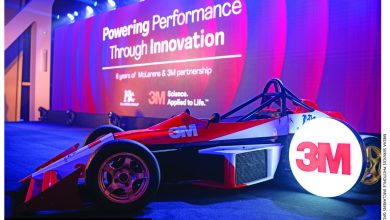THE COLOMBO WATER SUPPLY SERVICE IMPROVEMENT PROJECT (CWSSIP)
Q: How was the Colombo Water Supply Service Improvement Project (CWSSIP) initiated?
A: This project – which is one of many implemented by the National Water Supply and Drainage Board (NWSDB) – commenced physical activities in 2015 with the objective of reducing leaks and non-revenue water losses from 50 percent to less than 18 percent. The project involves major pipe relaying underground and the creation of District Metered Areas (DMAs) for easy operation.
The total cost of the project is US$ 273 million, and it’s funded by the Asian Development Bank (ADB) and the Government of Sri Lanka. ADB also provides guidance and supports us in monitoring progress, while keeping a tab on the social and environmental impacts of the project.
Q: What is the present status of Colombo’s water pipe network?
A: A major part of the existing pipeline network was installed in 1886 and today, almost 36 percent of the water supply to Colombo is lost due to erroneous meters, errors in data management, water theft and corrosion. In addition, there’s the depreciation and dilapidation of these old pipes.
On an average day, NWSDB supplies 290,000-300,000 cubic metres and Colombo uses between 150,000 and 160,000 cubic metres. With the city’s new developments, demand is increasing and without this project, the daily requirement would rise to around 358,000 cubic metres by 2020.
By implementing this project and thereby reducing the loss of water, the demand can be reduced to 285,000 cubic metres.
Some areas in Colombo such as Hulftsdorp, Grandpass and Colpetty receive less water at lower pressure during the day. Due to the water shortage, we even have to suspend the provision of service connections to new site developers.
Furthermore, treatment plants supplying water to Colombo are operating at optimal capacity – and existing transmission lines are inadequate to carry water to cater to the increasing demand.
Q: Why hasn’t this been addressed sooner?
A: Water is extremely cheap in Sri Lanka – we only charge households Rs. 12 for 1,000 litres (i.e. one unit) for the first five units. We have 2.2 million service connections of which 92 percent is domestic where the majority of bills are under 500 rupees.
So earnings are low and we’re unable to invest in developing systems especially since most of the material has to be sourced from overseas.
Q: Once this project is completed, what changes would we see?
A: Right now, the entire water distribution system is operating as one large system. This leads to issues with regard to non-revenue water management activities; but once the project is completed, Colombo will have 78 DMAs under four broad regions.
We have four reservoirs supplying water to the city – and currently, all this water gets mixed. This makes it difficult to identify where a particular location is receiving water from. Under the new system, distribution is designed on a reservoir basis. This will make it easier to deal with emergencies and breakdowns while enabling us to pursue extensive service improvements.
Q: What are the bottlenecks you face in carrying out this project?
A: Not having sufficient information on the current system is our main problem. The City of Colombo’s underground is full of cables – electricity, water, cable TV, sewage and others – and many ad hoc problems pop up when we dig.
In addition, we’re unable to use machinery because of the risk of damaging cables.
Due to the traffic congestion caused by digs, we’re only able to work at night and this requires more resources – sometimes even from other nationalities.
Even for the workforce, there is a lot of negativity in the form of complaints from the general public and building owners. They are further demotivated since the project involves a lot of reworking and this prevents them from seeing a definite end, leading to very high turnover.
Q: So what is the project status as of now?
A: Out of a planned 700 km of pipe length, we have achieved 290 km up to now. And out of 78 DMAs, we have completed eight, are about to complete 21 and are currently working on 26.
Q: And what are the fringe benefits that the project will bring about?
A: In addition to a stream-lined supply of water at good pressure in Colombo, the project has a lot of ancillary objectives including the installation of domestic water meters outside the boundary walls to facilitate meter reading.
We’re also working with an NGO to address the issues of water and sanitation in low income dwellings in Colombo while spreading awareness among the general public about this precious commodity.
Q: What kind of support is needed from the community to speed up this project?
A: Water is a basic resource and the lifeblood of humans. So a consistent water supply
at good pressure will uplift homes, businesses and the entire community.
The project is time-consuming, and the team is not always able to stick to timelines since construction and rehabilitation have to be undertaken in tandem with the running of the current inefficient system while ensuring that everyone has water without an issue at all times.
This is a national problem and therefore, the support of the entire nation is needed to overcome it. This is an important project for Colombo and we need all the help we can get, in terms of support, patience and understanding, from homes and the business community.
Abdul Rasheed
Project Director
Greater Colombo Water & Wastewater Management Improvement Investment Programme
Telephone 2363705
Email cwssiadb@yahoo.com
Website www.waterboard.lk








